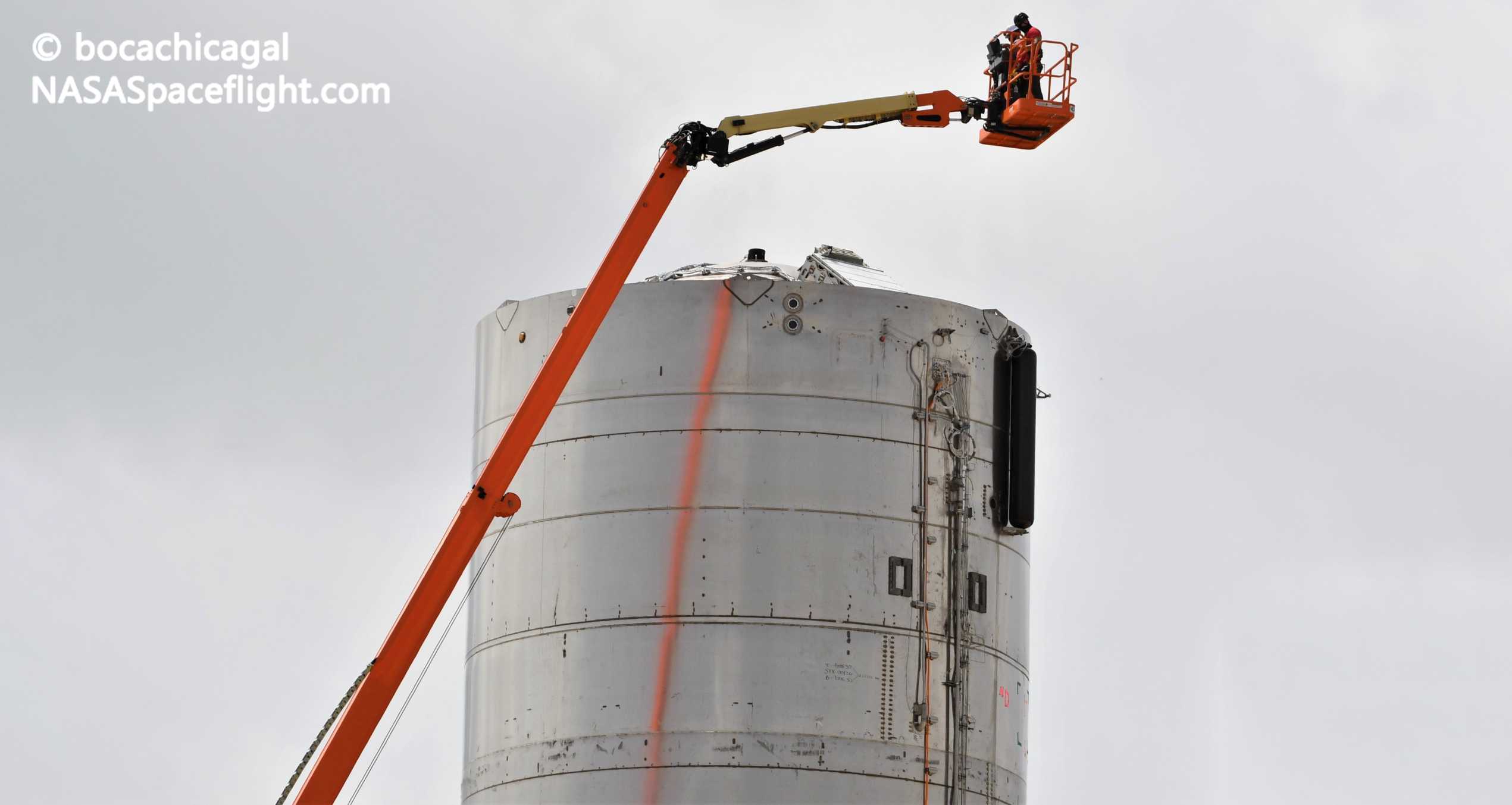
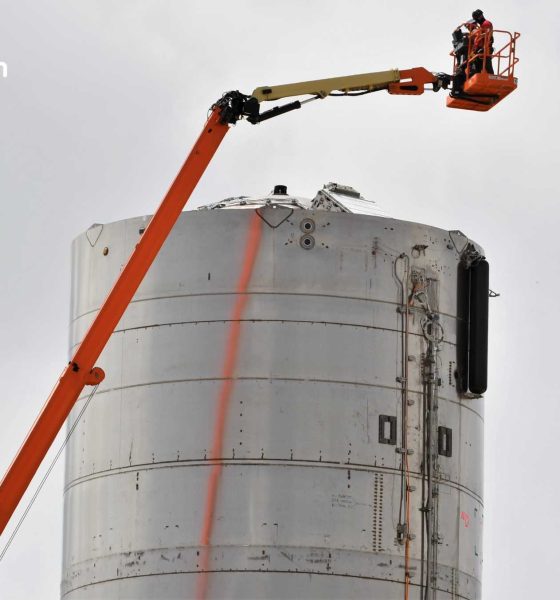
News
SpaceX Starship prototype bears down on first Raptor engine tests
SpaceX’s fifth full-scale Starship prototype is fast approaching its first Raptor static fire tests after the company recently delivered one of the newest engines to the launch site.
Known as Starship SN5, the ship is the fifth SpaceX has built since full-scale prototype development began in early 2019, as well as the fourth full-scale ship the company has completed since it began producing upgraded hardware in January 2020. SN5 rolled from SpaceX’s Boca Chica, Texas rocket factory to nearby test and launch facilities on June 24th, less than a month after Starship SN4 was destroyed by operator error minutes after completing its fourth Raptor static fire in four weeks.
While Starship SN5 was already more or less complete, SN4’s explosive demise damaged the launch mount (used to secure and fuel prototypes) beyond repair, forcing SpaceX to rapidly build and outfit a replacement. SpaceX finished that replacement mount around June 20th, installed SN5 on it a few days later, and then spent about a week finalizing and inspecting both components.
After barely a month of downtime, Starship SN5 kicked off its first gauntlet of tests late on June 30th, carrying on into the early morning of July 1st. As usual, SpaceX began with an ambient-temperature pressure test, filling Starship’s tanks with neutral nitrogen gas to check for leaks. This time around, SN5 must have been put together with exceptional care, as the company was able to immediately proceed into the ship’s first cryogenic proof test just a few hours later.
CEO Elon Musk has yet to offer any confirmation but the implication is that SN5 performed beautifully during its first liquid nitrogen proof test. Notably, based on NASASpaceflight.com’s excellent unofficial coverage, SN5’s cryo proof was uniquely ambitious. It’s unclear what if the test infrastructure, SN5, general confidence in the vehicle, or some combination of the above components were upgraded, but SpaceX appeared to load Starship SN5 with liquid nitrogen incredibly quickly, taking just 20-30 minutes to fully fuel the rocket. Given that all of that liquid nitrogen (some 1000+ metric tons or ~3.2 million gallons) is being loaded through a single “quick disconnect” panel, it’s no mean feat and far outweighs SpaceX’s already speedy Falcon 9 and Heavy propellant loading.
SpaceX is famously the only current launch vehicle operator known to “sub-cool” its rockets’ propellant, effectively squeezing a performance boost of 5-10% out of the same rocket hardware by making said propellant colder – and thus denser. That performance increase comes with tradeoffs, though, adding significantly tighter operational constraints, lowering delay tolerances, and necessitating an extremely quick propellant load. Sub-cooled liquid oxygen and methane has always been part of SpaceX’s plans for Starship, so fast-load tests were inevitable, but it’s a great sign that the company is starting to seriously think about capabilities that will be necessary for efficient orbital launches.
Meanwhile, labeled “27”, the engine – logically assumed to be Raptor SN27 – SpaceX has just installed on Starship SN5 is also of interest. On top of Musk’s recent confirmation that SpaceX is already building Raptor SN30 (probably SN31 or SN32, now), SN27’s assignment to Starship SN5 confirms that the company has managed to complete (and test) at least one next-generation engines every other week since the first full-scale engine shipped to McGregor, Texas in February 2019.
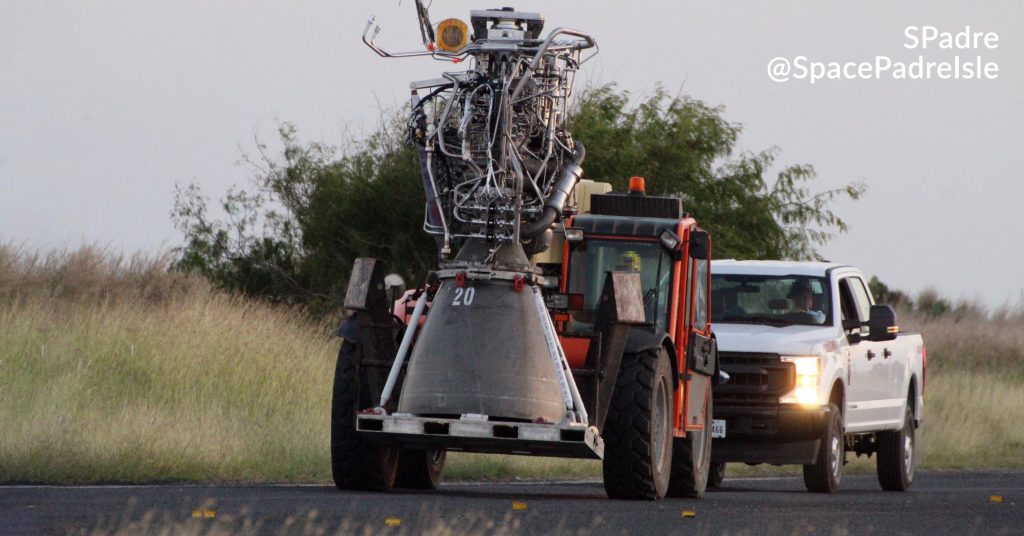
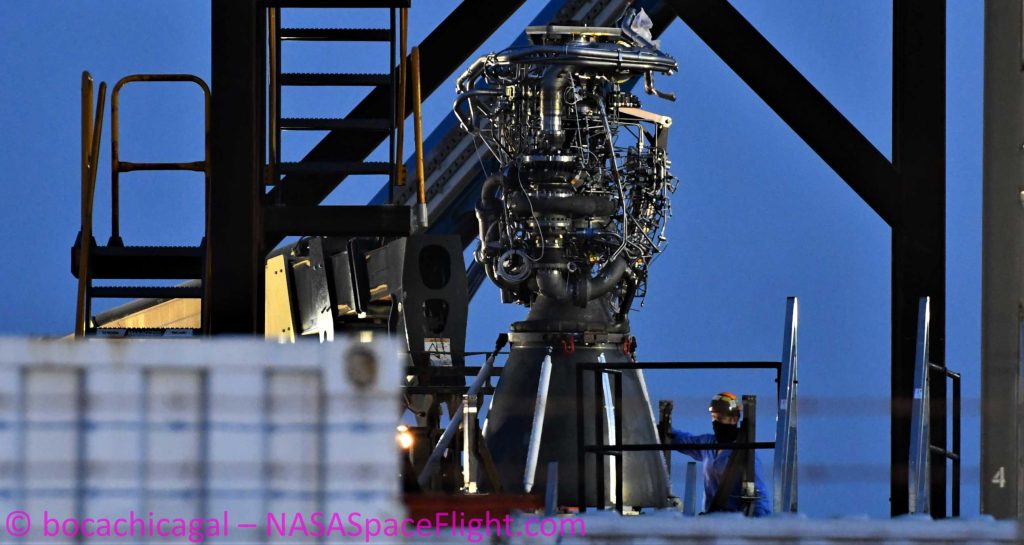
For a brand new engine as complex as Raptor, that’s an impressive production milestone. Per Musk, the end-goal is to produce at least one Raptor per day in the near term – a necessity given that each Starship and Super Heavy booster pair will require at least 37 engines. To feasibly build a fleet of tens – let alone hundreds or thousands – of Starships and boosters, one engine per day is arguably the bare minimum required just for early orbital launch attempts and initial operations.
According to published schedules, Starship SN5’s first live wet dress rehearsal (WDR) and static fire tests could happen as early July 8th, with backups on the 9th and 10th. Coincidentally, SpaceX’s next orbital Falcon 9 launch is also expected on the 8th, meaning that both Starship and Falcon 9 could fire up more or less simultaneously.
Check out Teslarati’s Marketplace! We offer Tesla accessories, including for the Tesla Cybertruck and Tesla Model 3.

News
Tesla hints at Starlink integration with recent patent
“By employing polymer blends, some examples enable RF transmission from all the modules to satellites and other communication devices both inside and outside the vehicle.”

Tesla hinted at a potential Starlink internet terminal integration within its vehicles in a recent patent, which describes a vehicle roof assembly with integrated radio frequency (RF) transparency.
The patent, which is Pub. No U.S. 2025/0368267 describes a new vehicle roof that is made of RF-transparent polymer materials, allowing and “facilitating clear communication with external devices and satellites.”
Tesla believes that a new vehicle roof design, comprised of different materials than the standard metallic or glass elements used in cars today, would allow the company to integrate modern vehicular technologies, “particularly those requiring radio frequency transmission and reception.
Tesla has recently filed a US patent application on integrating RF transparent materials into the roof structure.
“facilitating clear communication with external devices and satellites”
Tesla fleet is getting @Starlink connectivity integration soon. LFG @Tesla @elonmusk… pic.twitter.com/bLa8YtPLd1
— Chansoo Byeon (@Chansoo) December 9, 2025
Instead of glass or metallic materials, Tesla says vehicles may benefit from high-strength polymer blends, such as Polycarbonate, Acrylonitrile Butadiene Styrene, or Acrylonitrile Styrene Acrylate.
These materials still provide ideal strength metrics for crashworthiness, stiffness for noise, vibration, and harshness control, and are compliant with head impact regulations.
They would also enable better performance with modern technologies, like internet terminals, which need an uninterrupted signal to satellites for maximum reception. Tesla writes in the patent:
“By employing polymer blends, some examples enable RF transmission from all the modules to satellites and other communication devices both inside and outside the vehicle.”

One of the challenges Tesla seems to be aware of with this type of roof design is the fact that it will still have to enable safety and keep that at the forefront of the design. As you can see in the illustration above, Tesla plans to use four layers to increase safety and rigidity, while also combating noise and vibration.
It notes in the patent that disclosed examples still meet the safety requirements outlined in the Federal Motor Vehicle Safety Standards (FMVSS).
Starlink integrated directly into Tesla vehicles would be a considerable advantage for owners. It would come with a handful of distinct advantages.
Initially, the inclusion of Starlink would completely eliminate cellular dead zones, something that is an issue, especially in rural areas. Starlink would provide connectivity in these remote regions and would ensure uninterrupted service during road trips and off-grid adventures.
It could also be a critical addition for Robotaxi, as it is crucial to have solid and reliable connectivity for remote monitoring and fleet management.
Starlink’s growing constellation, thanks to SpaceX’s routine and frequent launch schedule, will provide secure, stable, and reliable internet connectivity for Tesla vehicles.
Although many owners have already mounted Starlink Mini dishes under their glass roofs for a similar experience, it may be integrated directly into Teslas in the coming years, either as an upgrade or a standard feature.
News
Tesla supplements Holiday Update by sneaking in new Full Self-Driving version
It seems Tesla was waiting for the Hardware 4 rollout, as it wanted to also deploy a new Full Self-Driving version to those owners, as it appeared in the release notes for the Holiday Update last night.
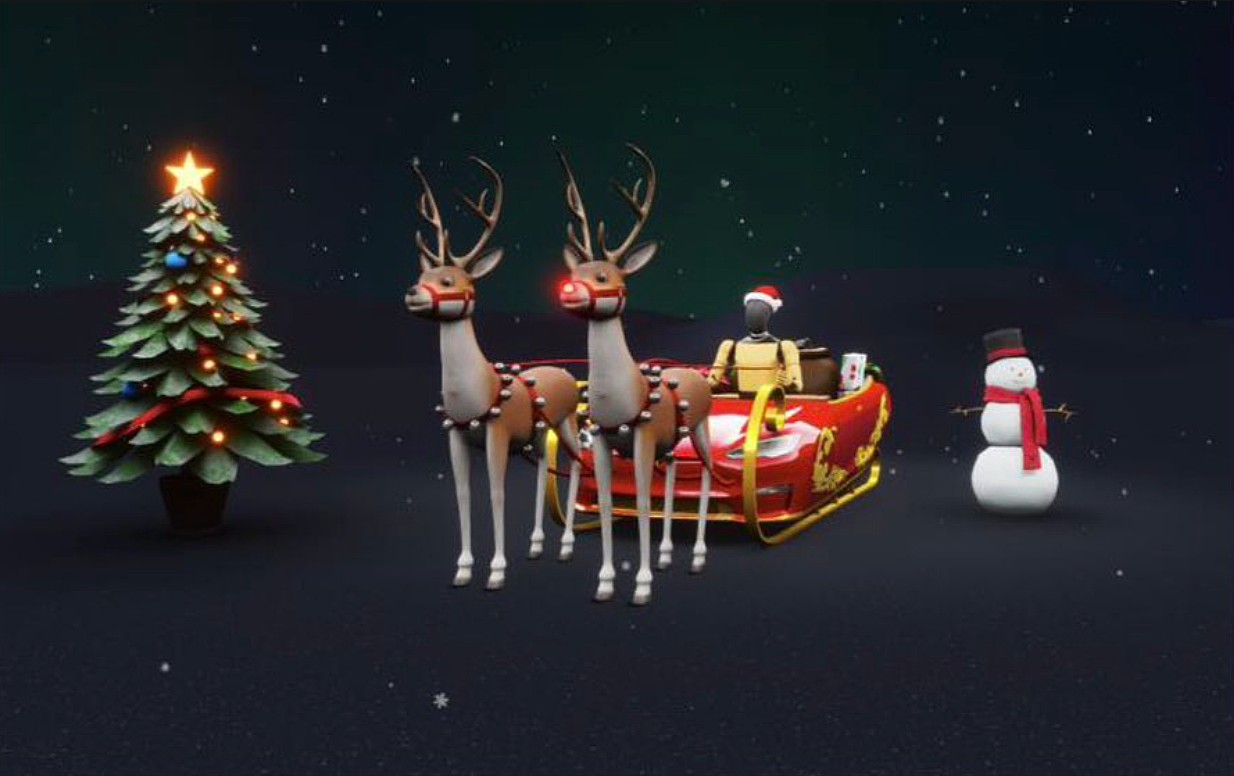
Tesla has surprised some owners by sneaking in a new Full Self-Driving version with the wide release of the Holiday Update, which started rolling out to Hardware 4 owners on Friday night.
Tesla has issued a controlled and very slow release pattern with the Holiday Update, which rolls out with Software Version 2025.44.25.5.
For the past two weeks, as it has rolled out to Hardware 3 and older Tesla owners, the company has kept its deployment of the new Software Version relatively controlled.
It seems Tesla was waiting for the Hardware 4 rollout, as it wanted to also deploy a new Full Self-Driving version to those owners, as it appeared in the release notes for the Holiday Update last night.
Tesla Full Self-Driving v14.2.1.25 made its first appearance last night to Hardware 4 owners who are members of the Early Access Program (EAP). It appears to be a slight refinement from FSD v14.2.1, which has been out for a couple of weeks.
Tesla v2025.44.25.5 Holiday update incoming
Also Full Self-Driving v14.2.1.25!!! pic.twitter.com/74D7S0UGXz
— TESLARATI (@Teslarati) December 13, 2025
Many owners welcome the new FSD version, us included, because we’ve been less than impressed with v14.2.1. We have experienced some minor regressions with v14.2.1, especially with Speed Limit recognition, Speed Profile tinkering, and parking performance.
As it stands, Full Self-Driving is still particularly impressive, but Tesla is evidently having an issue with some of the adjustments, as it is still refining some of the performance aspects of the suite. This is expected and normal with some updates, as not all of them are an improvement in all areas; we routinely see some things backtrack every once in a while.
This new FSD version is likely to take care of those things, but it also includes all of the awesome Holiday Update features, which include:
- Grok with Navigation Commands (Beta) – Grok will now add and edit destinations.
- Tesla Photobooth – Take pictures inside your car using the cabin-facing camera
- Dog Mode Live Activity – Check on your four-legged friend on your phone through periodic snapshots taken of the cabin
- Dashcam Viewer Update – Includes new metrics, like steering wheel angle, speed, and more
- Santa Mode – New graphics, trees, and a lock chime
- Light Show Update – Addition of Jingle Rush light show
- Custom Wraps and License Plates – Colorizer now allows you to customize your vehicle even further, with custom patterns, license plates, and tint
- Navigation Improvements – Easier layout and setup
- Supercharger Site Map – Starting at 18 pilot locations, a 3D view of the Supercharger you’re visiting will be available
- Automatic Carpool Lane Routing – Navigation will utilize carpool lanes if enabled
- Phone Left Behind Chime – Your car will now tell you if you left a phone inside
- Charge Limit Per Location – Set a charge limit for each location
- ISS Docking Simulator – New game
- Additional Improvements – Turn off wireless charging pad, Spotify improvements, Rainbow Rave Cave, Lock Sound TRON addition
Tesla also added two other things that were undocumented, like Charging Passport and information on USB drive storage to help with Dashcam.
Cybertruck
Tesla updates Cybertruck owners about key Powershare feature

Tesla is updating Cybertruck owners on its timeline of a massive feature that has yet to ship: Powershare with Powerwall.
Powershare is a bidirectional charging feature exclusive to Cybertruck, which allows the vehicle’s battery to act as a portable power source for homes, appliances, tools, other EVs, and more. It was announced in late 2023 as part of Tesla’s push into vehicle-to-everything energy sharing, and acting as a giant portable charger is the main advantage, as it can provide backup power during outages.
Cybertruck’s Powershare system supports both vehicle-to-load (V2L) and vehicle-to-home (V2H), making it flexible and well-rounded for a variety of applications.
However, even though the feature was promised with Cybertruck, it has yet to be shipped to vehicles. Tesla communicated with owners through email recently regarding Powershare with Powerwall, which essentially has the pickup act as an extended battery.
Powerwall discharge would be prioritized before tapping into the truck’s larger pack.
However, Tesla is still working on getting the feature out to owners, an email said:
“We’re writing to let you know that the Powershare with Powerwall feature is still in development and is now scheduled for release in mid-2026.
This new release date gives us additional time to design and test this feature, ensuring its ability to communicate and optimize energy sharing between your vehicle and many configurations and generations of Powerwall. We are also using this time to develop additional Powershare features that will help us continue to accelerate the world’s transition to sustainable energy.”
Owners have expressed some real disappointment in Tesla’s continuous delays in releasing the feature, as it was expected to be released by late 2024, but now has been pushed back several times to mid-2026, according to the email.
Foundation Series Cybertruck buyers paid extra, expecting the feature to be rolled out with their vehicle upon pickup.
Cybertruck’s Lead Engineer, Wes Morrill, even commented on the holdup:
As a Cybertruck owner who also has Powerwall, I empathize with the disappointed comments.
To their credit, the team has delivered powershare functionality to Cybertruck customers who otherwise have no backup with development of the powershare gateway. As well as those with solar…
— Wes (@wmorrill3) December 12, 2025
He said that “it turned out to be much harder than anticipated to make powershare work seamlessly with existing Powerwalls through existing wall connectors. Two grid-forming devices need to negotiate who will form and who will follow, depending on the state of charge of each, and they need to do this without a network and through multiple generations of hardware, and test and validate this process through rigorous certifications to ensure grid safety.”
It’s nice to see the transparency, but it is justified for some Cybertruck owners to feel like they’ve been bait-and-switched.








